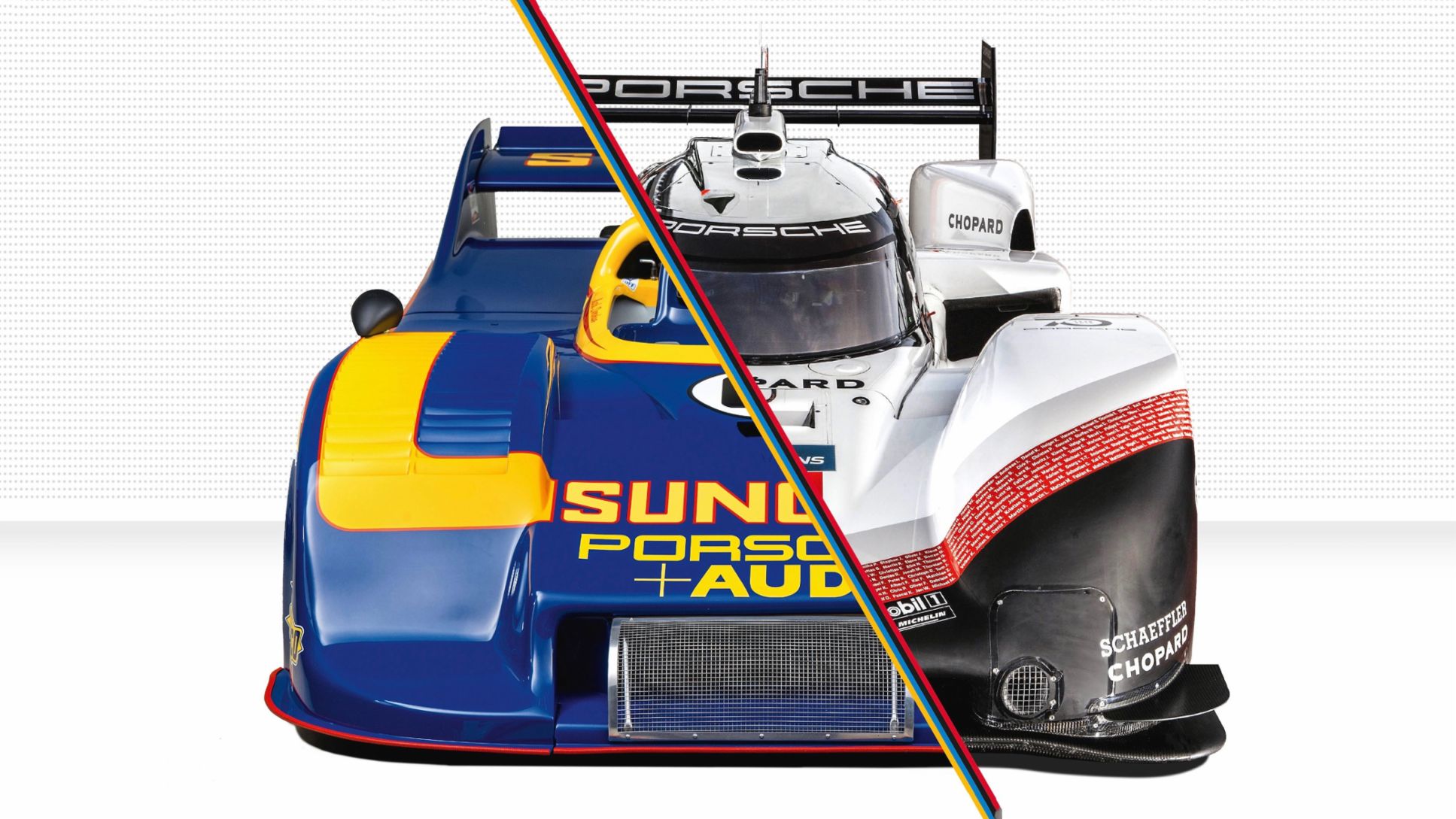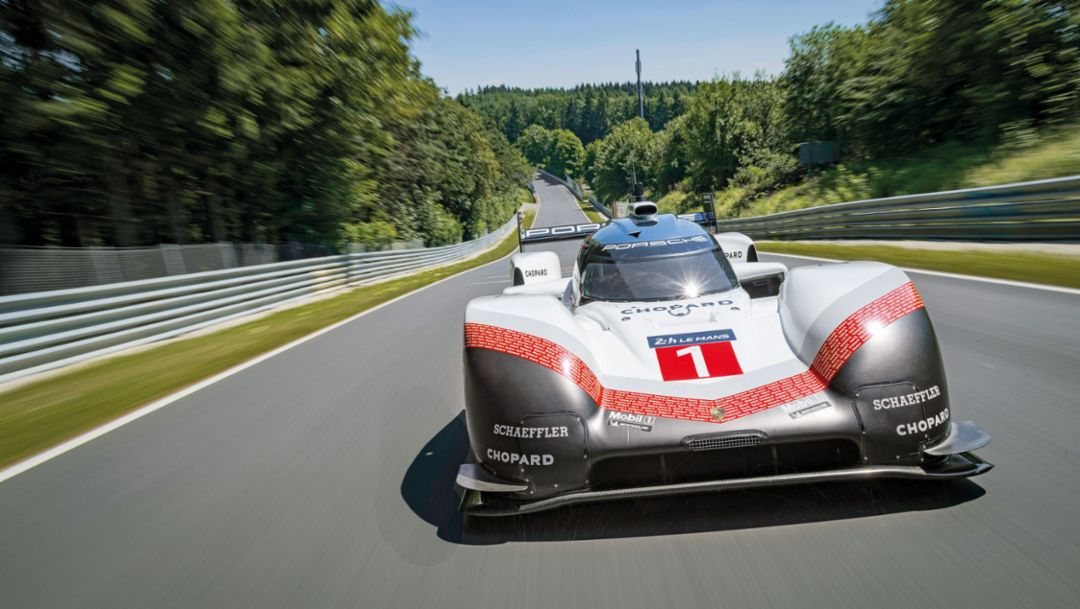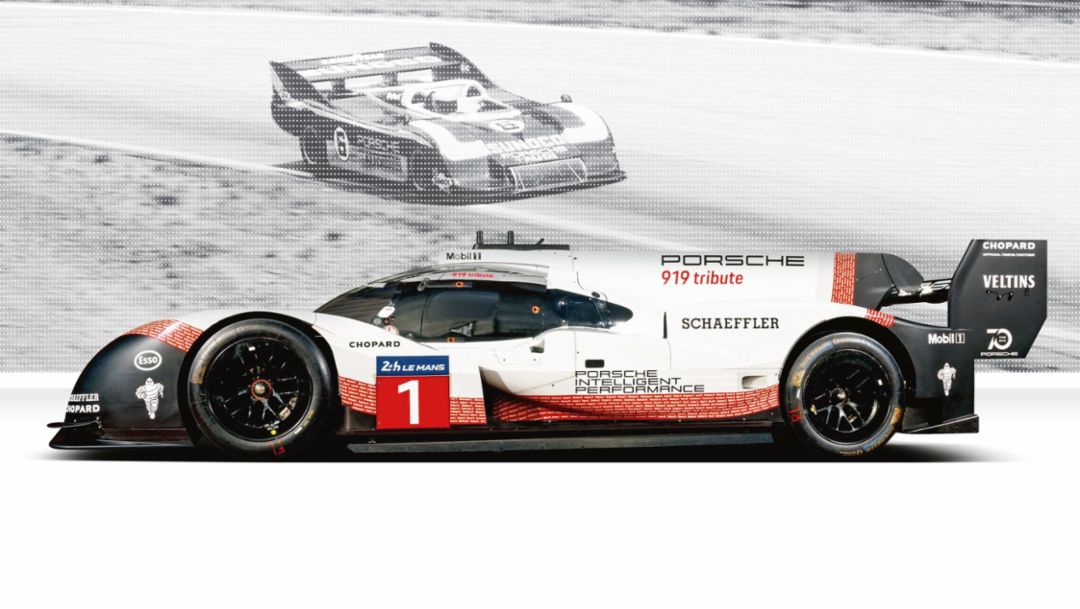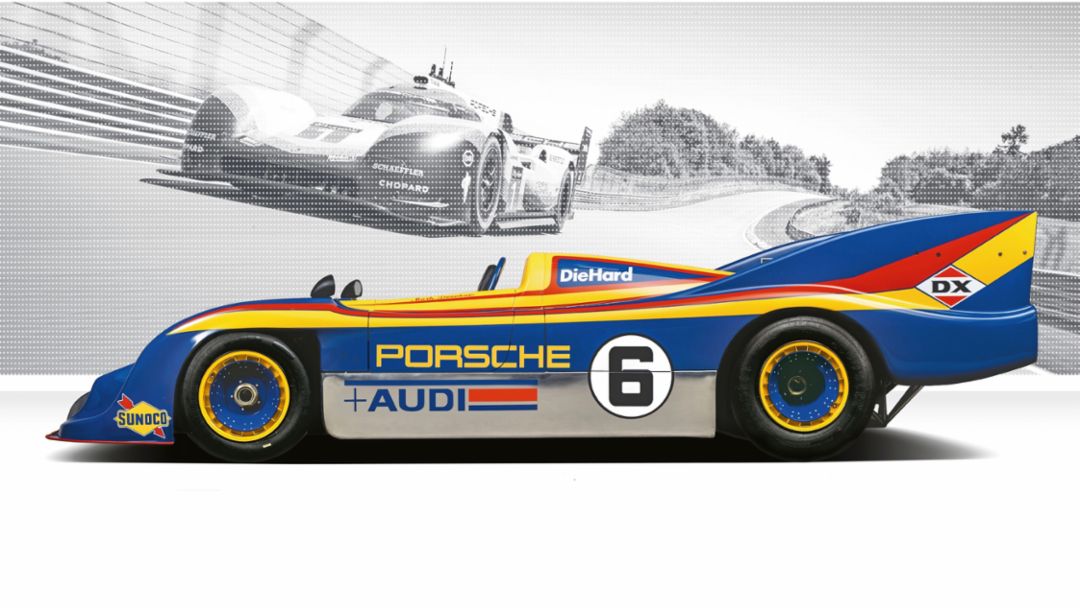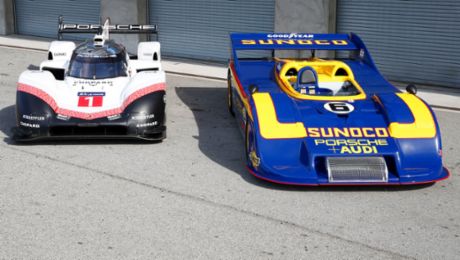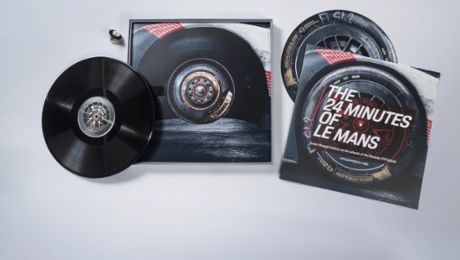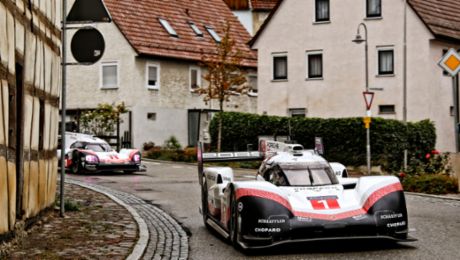Within a few hours, the Youtube video has hit over a million views: the on-board recording of Timo Bernhard’s record lap around the Nürburgring’s Nordschleife, or north loop, leaves professionals speechless. The two-time Le Mans winner and endurance world champion got around the legendary 20.8-kilometer course in the Evo version of the Porsche 919 Hybrid in 5:19.55 minutes. On June 29, 2018, he attained an average speed of 233.8 kmh in the “Green Hell” and a top speed of 369.4 kmh. The world of Formula One sent its congratulations. It’s already familiar with the Evo: back in April, Neel Jani drove it to a new premium-class record in Spa-Francorchamps. “The Beast,” as it’s known in England, is an advancement of the Le Mans prototype with which Porsche won the twenty-four-hour classic and the manufacturers’ and drivers’ world endurance championships three times from 2015 to 2017. At the end of the car’s career, the engineers were given the green light to free it from the shackles of regulations so that it could really show what it can do.
A genetic predisposition also played a role in the genesis of the Evo. Once before, in 1973, Porsche turned a victorious vehicle inside out: the 917 became the 917/30. Back then, the 917’s dominance was so stifling that motorsport authorities decided to intervene. Porsche had won the manufacturers’ title at the World Sportscar Championship in 1970 and 1971. The 917 had racked up fifteen endurance victories, including the brand’s first two overall victories at the 24 Hours of Le Mans, before its five-liter, twelve-cylinder engine was no longer permitted to compete in 1972.
Porsche presented the 917/30 in 1973
Porsche found a new field of activity. North America had long since become the brand’s largest individual market, and the Canadian-American Challenge Cup, or CanAm for short, became an attractive racing series. In order to be able to compete against the dominant McLarens and their 800 hp V8 engines from Chevrolet, the V12 aspiration engine of the 917 was not enough. Performance improvement by turbocharging was still largely uncharted territory—one that Porsche explored. Among the explorers was American Mark Donohue, a successful race-car driver and engineer. Thirty-four years old at the time, he was appointed developmental and factory driver. In 1972 the approximately 1,000 hp 917/10 TC Spyder (TC stands for turbocharged; Spyder refers to the now-open cockpit) won six CanAm races and the title.
As competitors got their vehicles ready for the 1973 motorsport season, Porsche presented its answer: the 917/30. Donohue’s improvements were quite invasive; they didn’t even leave the wheelbase untouched, lengthened from 2,310 to 2,500 millimeters. An elongated front and a significant protrusion of the rear wing were also added—aerodynamic measures with which Porsche had not yet had much experience. In Le Mans, air resistance had to be reduced as much as possible to increase the maximum speed. In North America, maximum downthrust was the order of the day. Somehow, the monumental power of the engine needed to be transferred to the road surface, as the V12 now provided the eight-hundred-kilogram Spyder with 1,100 hp.
Mark Donohue was the only driver to pilot the 917/30 as a factory racer
The response behavior of the turbo presented the engineers with an enormous task: the engine, which now had a capacity of 5.4 liters, released its power later, but with brute force. Porsche applied several detailed solutions in the aspiration system in an attempt to come to grips with the problem. Sitting in the Spartan cockpit, Donohue could now turn a boost controller to regulate the V12’s manifold pressure. When taking off, he could turn up the pressure and, once up to race speed, turn it down again. This spared the engine and saved gas. The V12 engine was a thirsty one, which was why the gas tank of the 917/30 could hold up to 440 liters.
Mark Donohue was the only driver to pilot this super sports car as a factory racer. In 1973 he won six out of eight races in the CanAm series and also took home the championship title. And then, history repeated itself. A change to the rules once again meant that the superior vehicle was excluded. Was everything over? Not at all. On August 9, 1975, the 917/30 gave one last brilliant performance: on the 4.28-kilometer Talladega Superspeedway in Alabama, Donohue’s average speed of 355.86 kmh set a new world record that stood for eleven years. The V12 engine achieved 1,230 hp thanks to charge-air coolers, used here for the first time.
The Porsche 919 Hybrid wasn’t expected to dominate the Nordschleife of the Nürburgring any more than Porsche had envisaged a record run on the steep oval when developing the 917. The parallels between the two icons stretch from their conception to their record runs: both were presented at the Geneva Motor Show, the only two occasions where Porsche placed a race car at the center of its brand profile. Both were the most innovative and dominant race cars of their time, and the creation of both took a considerable dose of courage. This applies to Ferdinand Piëch’s determination to build the twenty-five specimens needed for the homologation of the 917 in 1969—despite the financial risks—as well as to the 2014 decision of the Porsche Executive Board to return to Le Mans and the World Sportscar Championship with a very technologically advanced hybrid vehicle.
Unlike with the development of the 917/30, the Evo version of the 919 has the same hardware in the drivetrain as its predecessor. The V4 turbo, whose capacity is only 2.0 liters, continues to drive the rear axle—without, however, the fuel restriction to which it was previously subject. Thanks to this design and with a certain amount of software support, the combustion engine in the Evo attains 720 hp instead of 500. The two energy recuperation systems provide massive support by collecting brake energy on the front axle and—by means of an additional turbine—energy in the exhaust tract and storing it temporarily in a lithium-ion battery. Where the rules of the World Sportscar Championship previously limited the deployable quantity of energy from these systems, the technology in the Evo can now be used to its full potential. The e-motor on the front axle of the temporary all-wheeler now contributes 440 hp, 10 percent more than before.
The Evo generates 53 percent more downthrust than the 919 did
The impressive result is a system output of 1,160 hp at a vehicle weight that has been reduced from 888 (including the driver ballast) to 849 kilograms. A brake-by-wire system for all wheels is part of the vehicle equipment, as are chassis reinforcements and specially developed Michelin tires. This vehicle generates more aerodynamic downthrust than a Formula One race car. The larger front diffuser and the more powerful rear wing are also equipped with active aerodynamics. Similarly to Formula One, drag reduction systems are used to set the wing elements flat in order to reduce air resistance on long, straight stretches. The underbody, which has also been aerodynamically optimized, now bears lateral skirts that serve to increase the downward pressure toward the road surface, allowing even higher speeds on bends. Overall, the Evo generates 53 percent more downthrust than the 919 did at the World Championships. “As if on rails,” is how Timo Bernhard describes the feeling of driving it. Donohue could only have dreamed of a road position like that during his daring race in Talladega.
Porsche 919 Hybrid Evo
Combustion engine: Water-cooled V-turbo engine (90°)
Cylinders: 4
Displacement: 2,000 cc
System output: 1,160 hp
Weight: 849 kg
Number produced: 1
Year: 2018
Porsche 917/30 CanAm-Spyder
Engine: Air-cooled V-turbo engine (180°)
Cylinders: 12
Displacement: 5,374 cc
Power: 1,100 hp at 7,800 rpm
Weight: 800 kg
Number produced: 2
Year: 1973
Info
Text first published in the Porsche customer magazine Christophorus, No. 388
